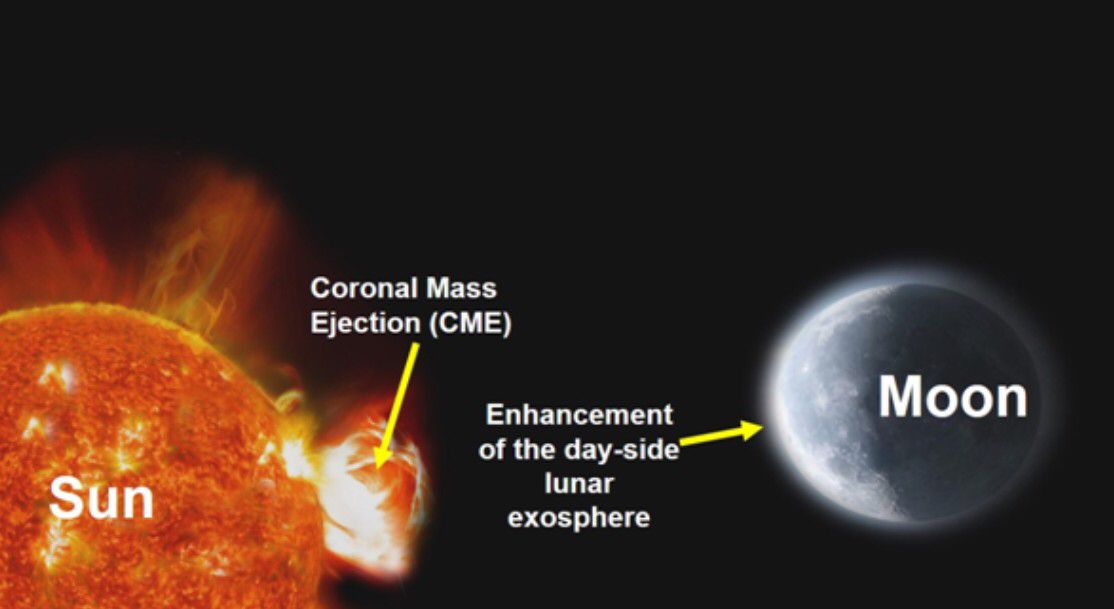Chandrayaan-2 Observes Sun’s Impact on Moon’s Thin Atmosphere
Chandrayaan-2 Observes Sun’s Impact on Moon’s Thin Atmosphere
Bengaluru, October 19, 2025
The Indian Space Research Organisation (ISRO) has reported a major scientific discovery with its Chandrayaan-2 mission. The lunar orbiter has, for the first time, directly observed how Coronal Mass Ejections (CMEs) from the Sun affect the Moon’s exosphere, the extremely thin layer of gases surrounding the Moon.
Using the Chandra’s Atmospheric Composition Explorer-2 (CHACE-2) instrument onboard Chandrayaan-2, scientists recorded the changes during a rare solar event on May 10, 2024. A series of CMEs struck the Moon, causing a notable rise in the pressure of the sunlit exosphere. The density of neutral atoms and molecules in the Moon’s atmosphere increased by more than ten times, confirming theoretical predictions that had never been directly observed before.
The Moon lacks a global magnetic field, making its exosphere highly sensitive to solar activity. CMEs, which are bursts of charged particles such as hydrogen and helium ions from the Sun, hit the lunar surface, knocking atoms and molecules into the exosphere. This temporarily changes the Moon’s atmospheric conditions.
ISRO explained that the lunar exosphere is classified as a surface boundary exosphere because its gas atoms and molecules interact very little and originate from the Moon’s surface. The exosphere is formed through several processes, including solar radiation, solar wind, and meteorite impacts. CMEs are particularly important because they increase the number of atoms released from the surface, creating measurable changes in pressure.
The observation, published in Geophysical Research Letters on August 16, 2025, provides valuable insights into lunar space weather. Scientists can now better understand how solar activity affects the Moon and plan for future lunar missions. The findings are also significant for designing human habitats on the Moon, as extreme solar events like CMEs can temporarily alter environmental conditions.
ISRO noted that CMEs are events when the Sun ejects significant amounts of material, mostly hydrogen and helium ions, which can impact the Moon directly. On May 10, 2024, multiple CMEs struck the Moon, intensifying the process of liberating atoms from its surface and increasing the density of its exosphere.
These findings will help scientists understand the dynamics of the Moon’s thin atmosphere and predict changes during solar events. It also highlights the challenges of establishing lunar bases, as architects must consider these temporary but significant environmental changes caused by solar activity.
Chandrayaan-2’s observations mark a new step in lunar exploration, combining space weather studies with practical applications for future human missions. By monitoring the Moon’s exosphere during solar events, ISRO has expanded knowledge of how the Sun influences bodies without a protective magnetic field, providing guidance for science and exploration in the lunar environment.
This milestone underscores India’s growing capabilities in space research and the potential of its Chandrayaan missions to advance global understanding of the Moon and solar system dynamics.
Chandrayaan-2 Observes Sun’s Effect on Moon’s Atmosphere
ISRO’s Chandrayaan-2 has made a breakthrough by observing how Coronal Mass Ejections (CMEs) from the Sun impact the Moon’s exosphere, its very thin atmosphere. Using the CHACE-2 instrument, scientists recorded a rise in atomic and molecular density during a CME event on May 10, 2024. The Moon’s lack of a global magnetic field makes it highly sensitive to solar activity, and the CMEs temporarily increased gas release from the surface. This observation helps scientists understand lunar space weather and will guide future lunar missions, including designing human habitats that can withstand solar events.














Add Comment